SAN FRANCISCO — Lincoln almost left the building. Word is that former Ford CEO Alan Mullaly, who had come from the airline business and did not have any special affection for historically significant auto brands, was ready to kill off Lincoln after Ford divested itself of its European luxury portfolio. Other Ford executives were able to persuade him to keep it, but then had to come up with a way to make the division relevant. Selling warmed-over Fords wouldn’t cut it going forward, and attempting to emulate the Germans (as Cadillac has tried to do) didn’t seem viable. It was decided Lincoln would proffer “American luxury,” but what did that mean?
The 2020 Lincoln Corsair is the latest answer to that question. Like its preceding bigger siblings, the Navigator and Aviator, it offers true design differentiation from Ford with a look all Lincoln’s own, and an emphasis not just on luxury features but a better ownership experience. Proper names are back too, which is why we're reviewing the "Corsair" and not the second-generation MKC.
Like that predecessor, the Corsair shares its architecture with the Ford Escape, albeit the all-new version. Despite their common bones, none of the body panels are the same. Instead, the look is right at home with the brand’s larger SUVs, featuring many of the same styling cues that include the now-familiar Lincoln grille, gently tapered roofline, blacked out pillars and long, slim taillights The Corsair has more sculpted flanks and a more pronounced shoulder, but the resemblance to the Aviator in particular is strong, and it's no surprise that both SUVs were penned by the same man: Kemal Curic, who has now ascended to the head design spot at Lincoln.
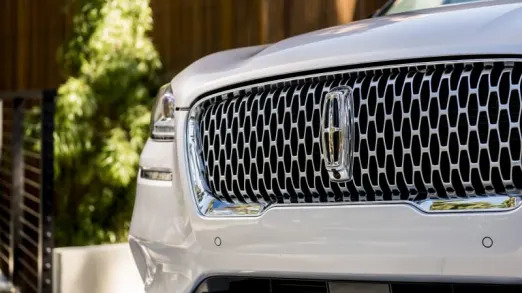
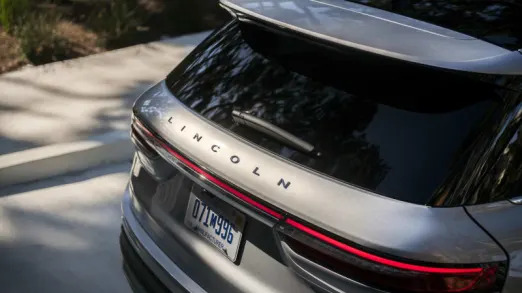
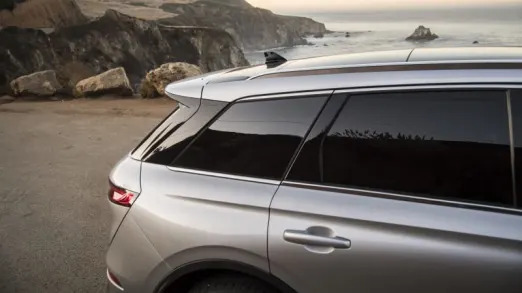

Compared to the MKC, overall length is 1.4 inches greater, the wheelbase is 0.8 inch longer, and the vehicle is 1.1 inches lower. That puts the Corsair’s exterior dimensions between the Audi Q3 and Q5 or the BMW X1 and X3. Its closest dimensional doppelganger is the Cadillac XT4, which will likely be its closest rival.
The Corsair’s interior echoes the exterior design with a horizontal theme that makes the cabin feel bigger. Vents stretch across the dash, and above them (in the Reserve model) is an inset band of striped silver metallic trim. The center stack floats above the console, making for an airier environment and leaving room for additional stowage, which is plentiful. The materials in our top-spec example were mostly good, save for the hard plastic on the glove box door and on the rear door panels. Lincoln is being less adventurous with interior color schemes here than in other recent models (including the MKC): The two-tone combinations are gray and black, tan and black, or blue and black. There is no Corsair Black Label model.
Lincoln’s available “Perfect Position” seats include a massage function and adjust 24 different ways. Among those is the degree of lateral support, but even at the least constrictive setting I found the seat uncomfortably confining. Strangely, my larger-sized driving partner did not. So, the lesson may be: Take a test-sit. In the back, Lincoln managed to add 1.8 inches more legroom than in the MKC, and the rear seat now slides fore-and-aft 6 inches. Passengers sit pleasantly up off the floor, and with the seat in its rearmost position, a 6-foot passenger sitting behind a same-size driver has plenty of legroom and knee clearance.



Behind the rear seats, cargo space expands by 2.4 cubic feet, to 27.6 cubic feet. That's excellent for the segment. Rear seatbacks folded, the Corsair has 57.6 cubic feet, which is 4.5 cubic feet more than before. Those figures better the XT4 and Lexus NX, but are still shy of larger luxury models like the Acura RDX or Volvo XC60.
An 8-inch touchscreen stands proud atop the dash, and while it is smaller than some, its graphics are sharp and modern. Apple CarPlay and Android Auto are standard, and the system also supports Waze and Amazon Alexa. A digital instrument cluster is available, but it’s somewhat unspectacular, lacking the ability to display the navigation map, for instance, and offering only a modest degree of configurability. The available head-up display is better, projecting a customizable variety of info in a viewing area that’s large, bright, and visible even through polarized sunglasses. Another option allows your smartphone to function as a key.
Staying on the tech front, Lincoln's compact SUV now includes the Co-Pilot360 safety suite of forward collision warning with automated emergency braking and pedestrian detection, blind-spot warning, lane-departure warning and lane-keep assist, and rear cross-traffic alert. The Co-Pilot360 Plus package adds convenience features including adaptive cruise control, lane-centering assist, automated parking, a 360-degree-view camera, and traffic-sign recognition. We tried out the lane-centering assist – which only works when cruise control is engaged – on both freeways and two-lane roads. It did an effective job guiding the Corsair on its own, although it does insist that the driver keep a hand on the wheel.
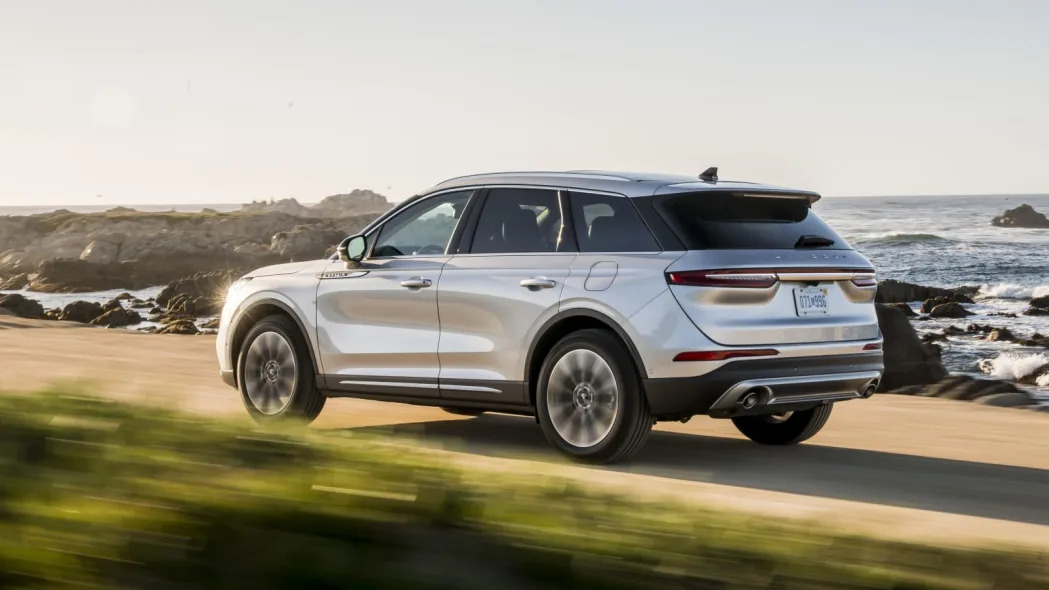
Lincoln initially is offering two turbocharged four-cylinder powerplants, both ported over from the MKC with only minor changes in output. The base 2.0-liter, paired with front- or all-wheel drive, now makes 250 horsepower and 280 pound-feet of torque. It's shared with the range-topping Escape, but the Corsair's step-up engine is not: a 2.3-liter paired exclusive with all-wheel drive that produces 295 hp and 310 lb-ft of torque. That's considerably better than competitors of both similar and larger size. There will also be a Corsair plug-in hybrid, but details have yet to be announced.
We spent most of our time with the 2.3-liter. It responds energetically and the all-wheel-drive system is able to put the 310 lb-ft to the wheels with no torque steer. Commendably, the new eight-speed automatic calls little attention to itself, operating with the discrete competence of a good butler. Shift paddles are on hand if the driver wants to briefly call the shots, but Lincoln’s piano-key PRND shift buttons don’t allow for a manual mode. We also took a brief spin in the 2.0-liter. It’s perfectly adequate in this application, but it doesn’t have the larger engine's surfeit of power and has a bit more delay in its response to accelerator inputs.
Despite the carry-over engines from MKC, fuel economy has improved due to the extra transmission gears, more than 100 pounds dropped from the base curb weight, and the all-wheel-drive system's newfound ability to disconnect the rear driveshaft. EPA ratings stand at 24 mpg combined for both engines with all-wheel drive, while the 2.0-liter front-drive model does a bit better at 25 mpg combined.
Additional mechanical differences between Corsair and Escape include a double-wall firewall, which along with active noise cancellation effectively quells cabin noise, and the optional adaptive damping suspension featured on both models we drove. The 20-inch wheels on the 2.3L Corsair made for some heaviness over bumps – the 2.0L with 19-inch wheels was better – but both were able to mask harshness. The selectable drive modes didn’t have much of an effect on the proceedings, and the Corsair displays a fair degree of bobbing on lumpy secondary roads along with considerable brake dive, which suggests it could use better body control.
However, as we pushed it harder through tight corners and fast sweepers on twisting roads south of San Francisco, the expected body roll didn’t materialize, nor did the Corsair understeer in protest. Instead, the suspension seems to firm up as you move beyond the initial compliance. The Corsair would have been more enjoyable along those roads but for the steering. Its effort feels springy rather than building in a linear and progressive fashion. Ultimately, the Corsair ends up being capable but not especially fun.
That said, Lincoln isn’t trying for sporty here, and we respect that. There’s no black trim package, no carbon-fiber accents, no faux-racy anything. Instead, think quietness, comfort, style and convenience. It's absolutely in-keeping with the Aviator.
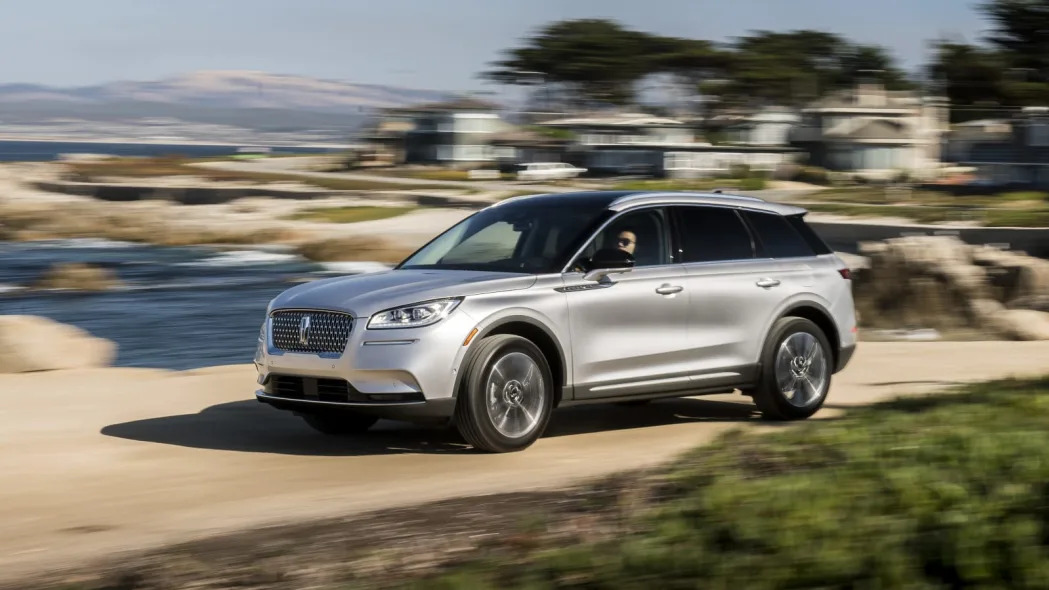
Pricing for the 2020 Corsair starts at $36,940 (with destination) for the front-drive 2.0-liter. That's about three grand more than the MKC, but the Corsair comes with considerably more standard kit. More important, perhaps, is how it compares to other brands. Against the Audis (which are all-wheel drive only), the AWD Corsair is priced about midway between a Q3 and a Q5. Against the BMWs, the front-wheel-drive Lincoln is much closer in price to the two-wheel-drive X1 than the X3. The starting price is virtually identical to the Cadillac XT4, and although the two have comparable luxury, convenience and tech equipment, the Lincoln provides more standard driver aids. It also has a more powerful base engine and the option of a vastly more muscular upgrade.
As always, profligate checking of option boxes can erode the value story: Our Reserve 2.3-liter all-wheel-drive test example had a base MSRP of $45,825, but the bottom line ballooned to $60,110 with a raft-load of extras. That’s silly money, but exercise some options restraint and the Corsair makes a case for itself with tasteful design, a quiet ride, a strong optional powertrain, and a spacious interior. Even accepting the wisdom of not offering a sporty version, there’s still room to improve the steering and body control in normal driving. But, like its bigger brothers, the Corsair shows that Lincoln has moved beyond its previous glitzy-Ford approach, and as a result, has become a brand worth keeping.
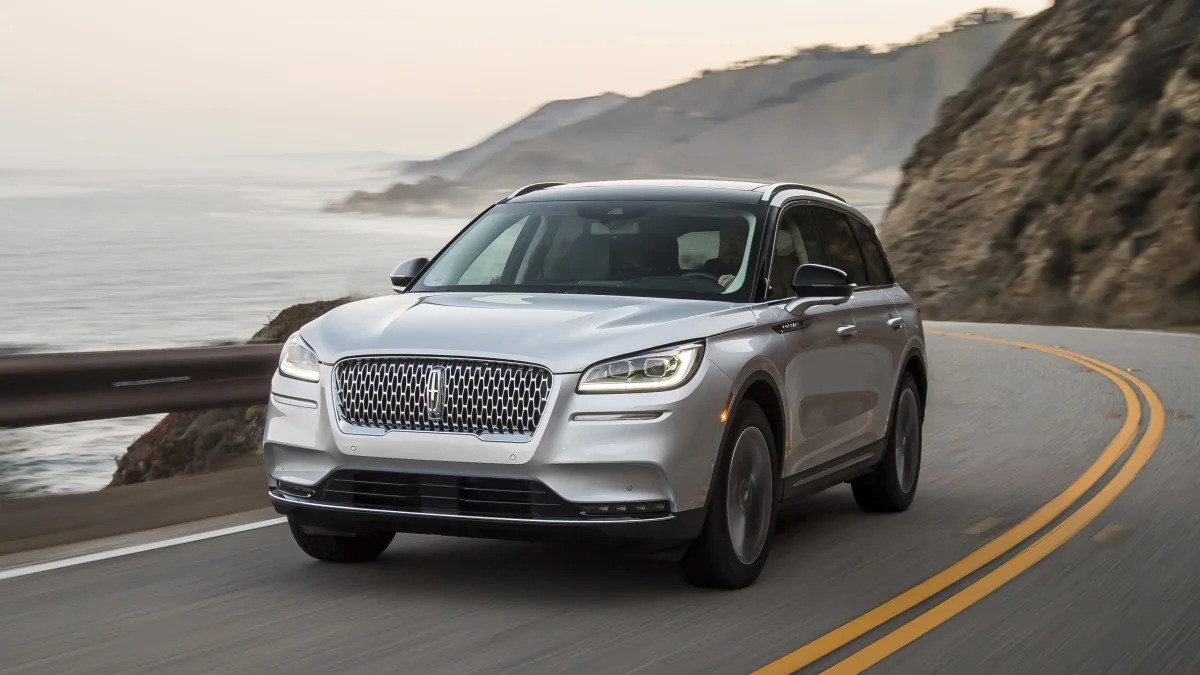









Sign in to post
Please sign in to leave a comment.
Continue